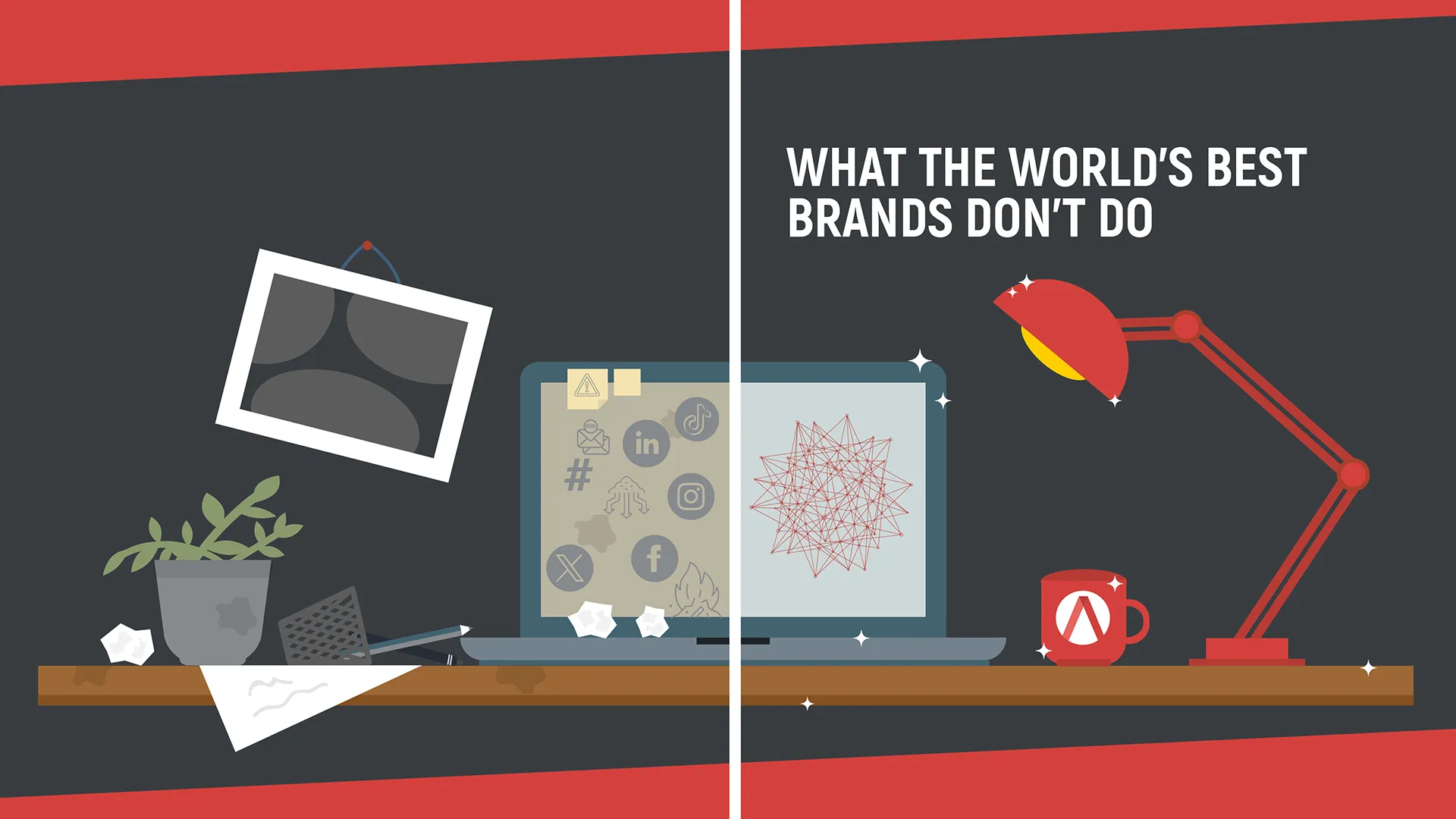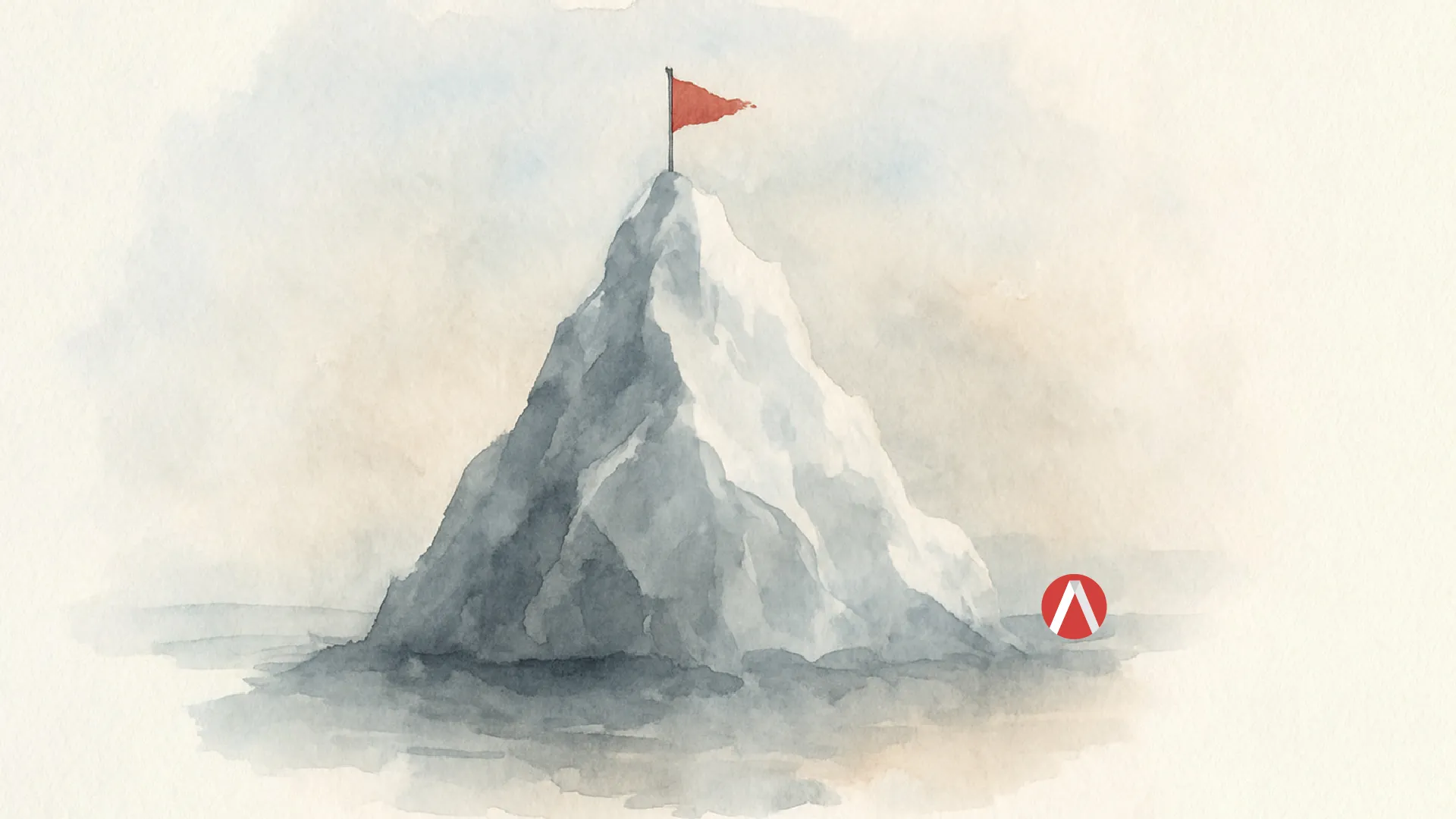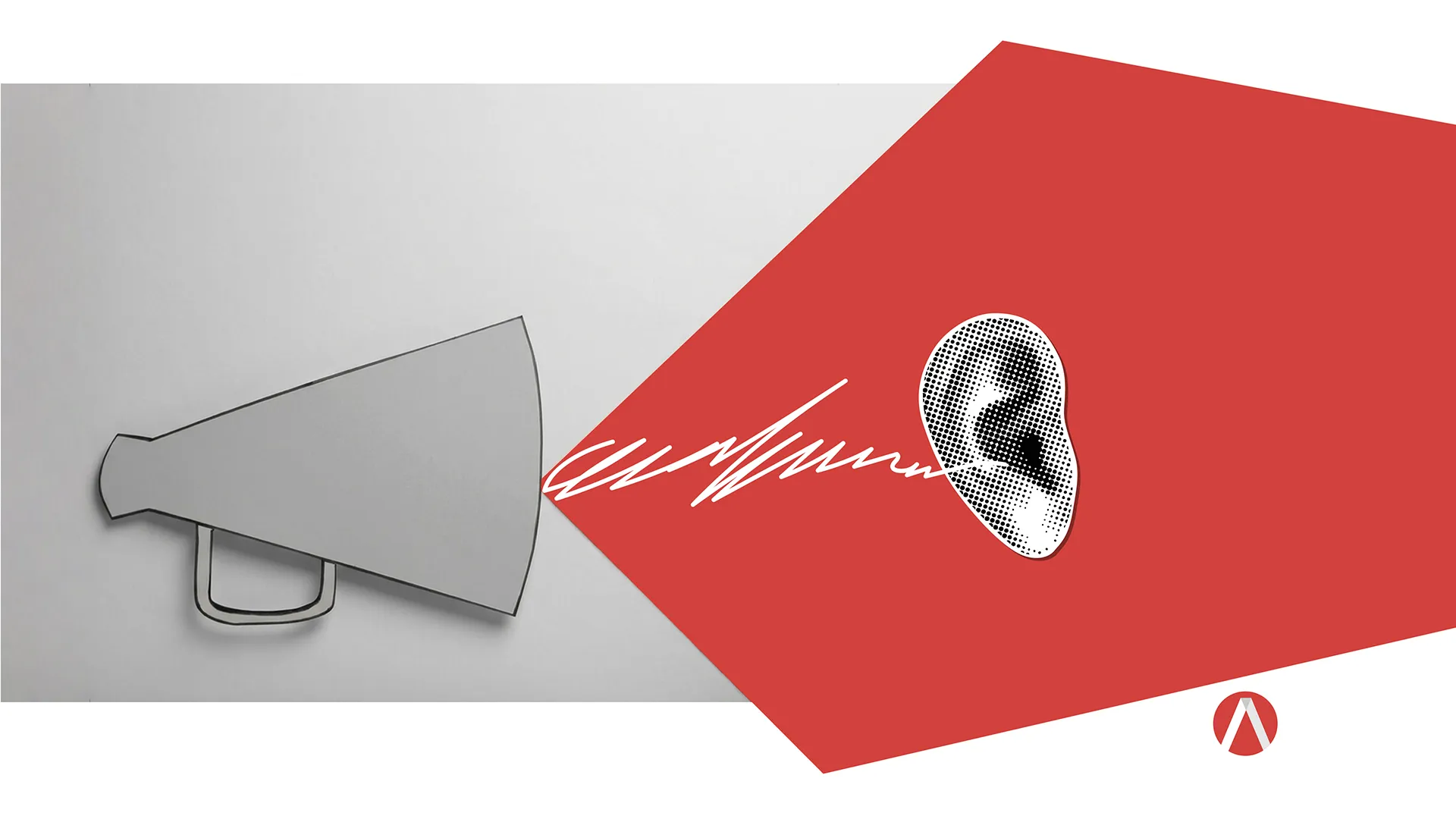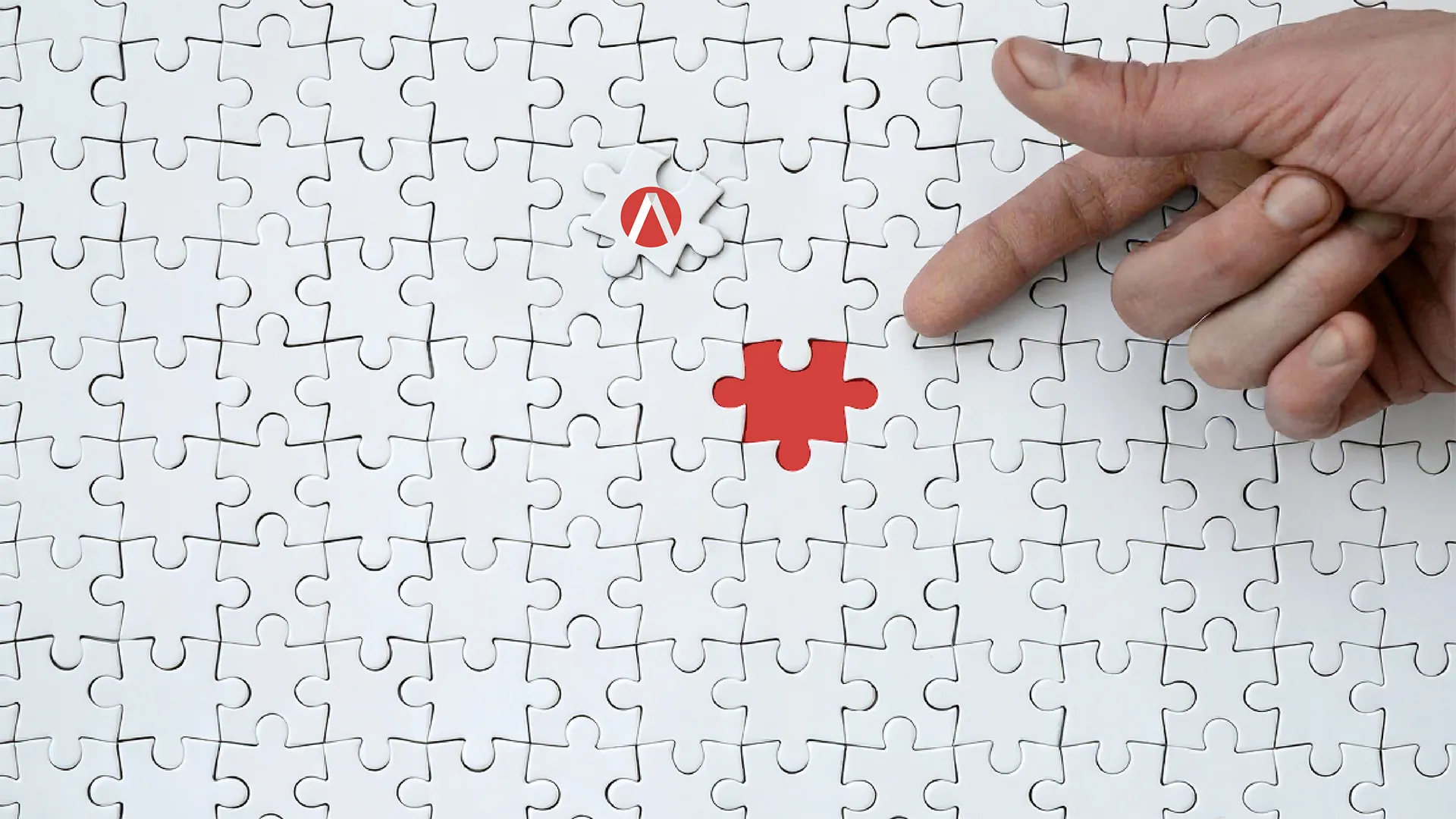By Lori Jones, President & CEO, Avocet Communications
Key Takeaways
- The world’s best brands don’t chase every trend; they lead through clarity.
- They don’t over-optimize content; they lean into authenticity.
- They don’t cling to old processes; they evolve before the world demands it.
- They don’t try to reach everyone; they stand powerfully for someone.
- They don’t mistake metrics for meaning; they prioritize real impact.
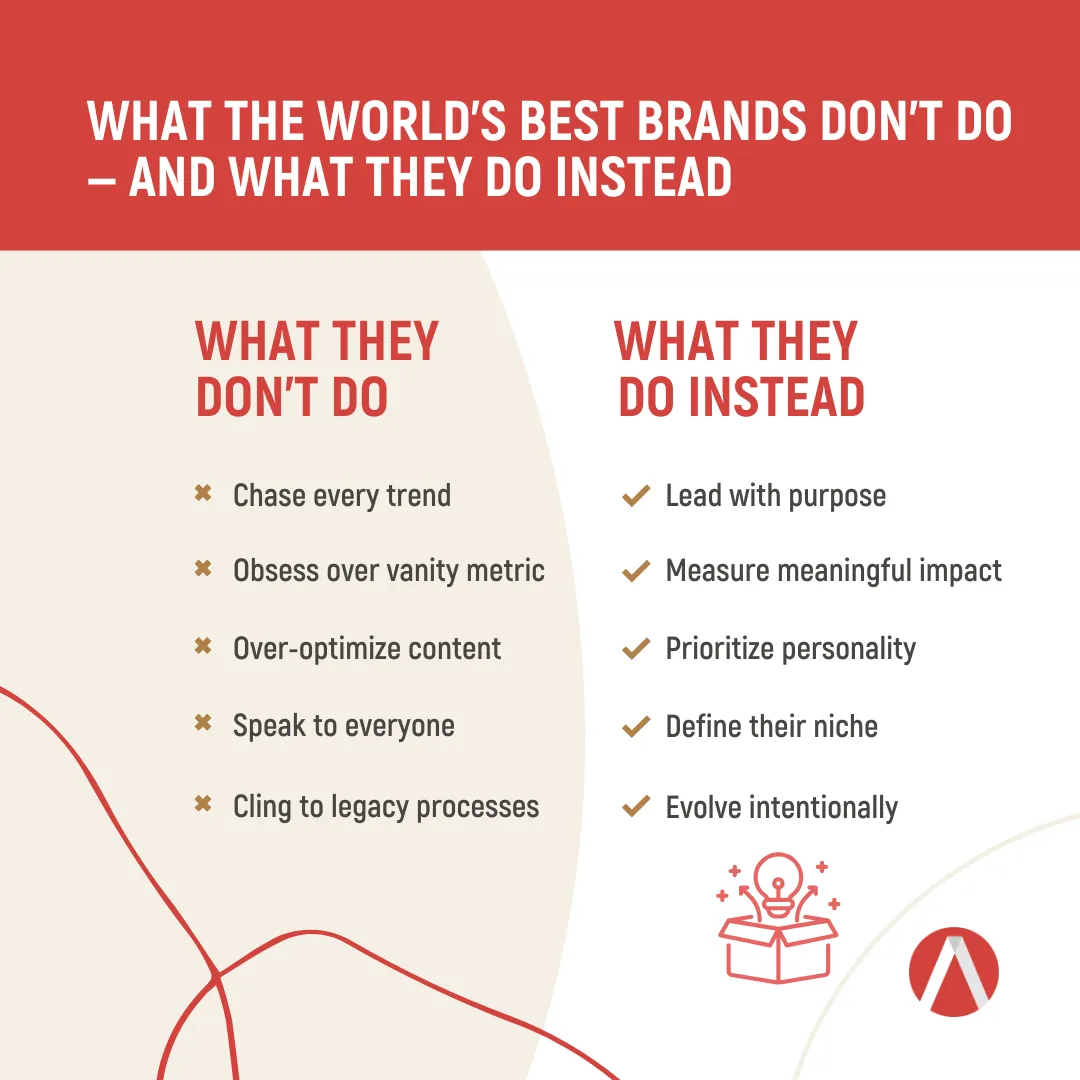
The Power of Strategic Restraint
I recently with a legacy brand wrestling with relevance. Their instinct? “We need to be on TikTok, launch a podcast, go viral on Threads, and overhaul our logo ASAP!” Sound familiar?
But here’s what I’ve learned from the world’s top-performing brands: what they don’t do matters as much as what they do. Their superpower is strategic restraint.
Don’t Chase Every Trend
Instead: Own Your Lane and Shape the Culture
Nike didn’t jump on every digital bandwagon; they created their own. Rather than launching NFTs or dabbling in AI for the sake of headlines, Nike focused on brand-consistent innovation like Nike Training Club, an app that surged in use during the pandemic and kept users connected to their fitness identity on Nike’s terms.
Example: Nike’s “You Can’t Stop Us” campaign (2020) garnered 40M+ views in its first week, not by following trends, but by doubling down on purpose-driven storytelling.
Learning: Before joining a trend, ask: Does this amplify our values, or dilute them?
Don’t Confuse Activity with Impact
Instead: Measure What Matters
Vanity metrics are tempting. Likes, shares, and impressions give us a dopamine hit. But Patagonia? They rarely chase those. Instead, they measure impact. Literally.
Example: Patagonia’s “Don’t Buy This Jacket” campaign urged customers to buy less and think more—a bold move that actually boosted sales by 30%. That’s what happens when your impact metric = environmental activism instead of empty reach.
Learning: Replace one “vanity metric” in your next report with a value-based KPI (brand affinity, sentiment shift, repeat engagement).
Don’t Over-Optimize Content
Instead: Embrace Imperfection for Human Connection
The algorithm may love SEO-stuffed titles, but your audience doesn’t. Take Duolingo: their TikTok strategy leans into chaotic humor and brand personality, not polished, over-edited content. It works.
Example: Duolingo’s TikTok, starring its green owl mascot in absurd but hilarious situations, grew the brand to 7M+ followers by prioritizing authenticity over polish.
Learning: Audit your last 10 content pieces. How many sound like a real person with a strong POV? Fix the ones that don’t.
Don’t Be Everything to Everyone
Instead: Be Unapologetically Specific
When Liquid Death launched, people scoffed. Canned water with heavy metal branding? But that was the point. Their radical tone, irreverent videos, and commitment to killing plastic pollution made them a movement.
Example: Liquid Death grew to a $1.4B valuation by boldly repelling the masses and fiercely attracting their niche. They didn’t speak to everyone, but they became a religion for some.
Learning: Define your anti-persona:
Who are we not for? Then dial up your messaging for those you are.
Don’t Cling to What Worked Yesterday
Instead: Outgrow Yourself Intentionally
Adobe used to sell software in boxes. Remember those? They didn’t wait for SaaS to disrupt them; they made the leap early, launching Creative Cloud in 2013. That move took vision and guts.
Example: Adobe’s pivot from perpetual licenses to subscriptions now fuels over $13B in annual digital media revenue. They didn’t evolve out of panic—they led with purpose.
Learning: Host a quarterly “Sacred Cows” session:
What beloved process, product, or platform is holding us back?
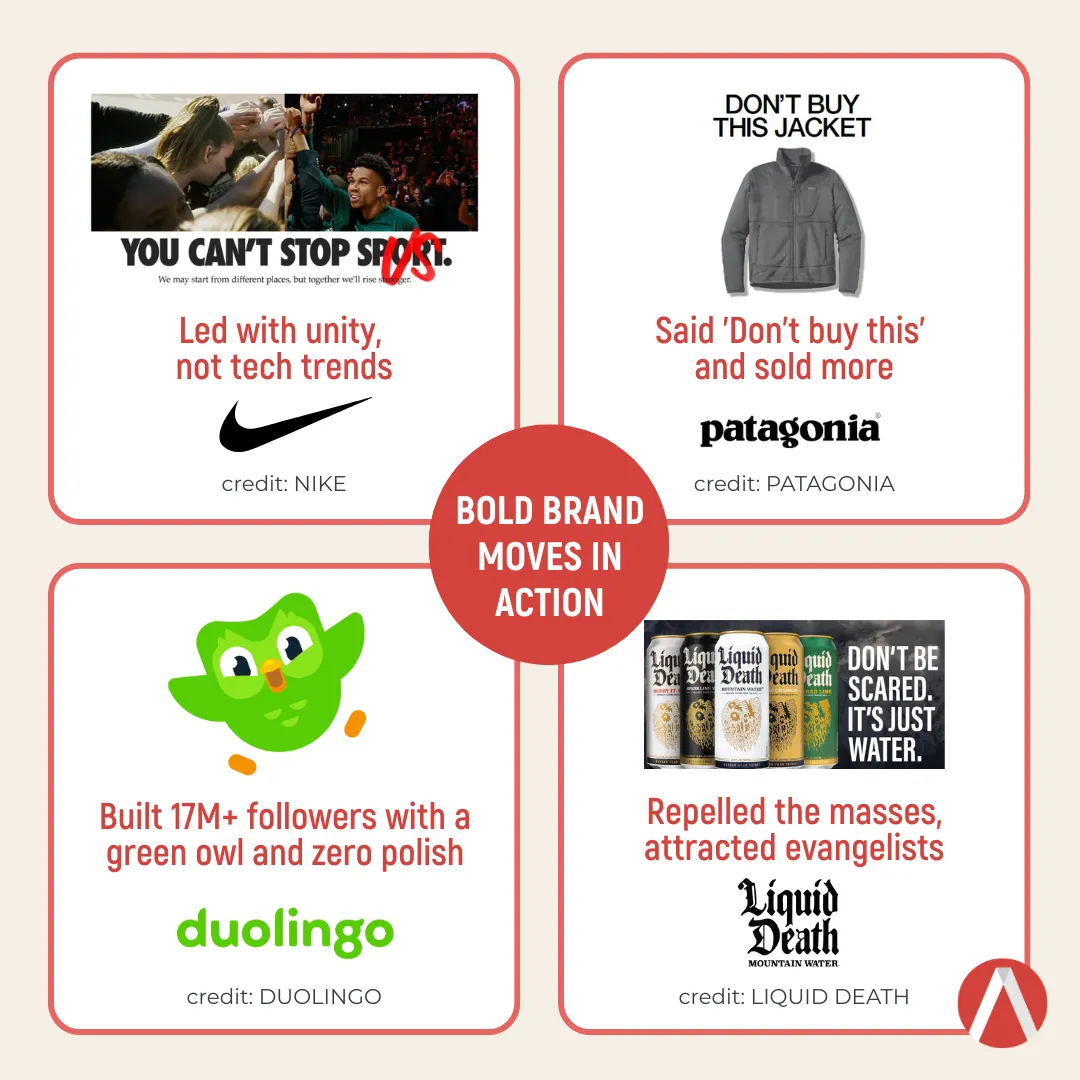
Final Thoughts: The Discipline of Saying No
At Avocet, we’ve built our agency and helped our clients grow on the principle that every yes demands a thousand no’s.
True brand leadership isn’t about being everywhere. It’s about being essential where it counts most.
Questions to Consider
- What channels or tactics are we maintaining purely from momentum?
- Are we confusing busyness with brand-building?
- Are we adapting with intention or reacting with urgency?
- Is our brand content optimized for algorithms or humans?
- What are we brave enough to say no to this quarter?
Want help getting clear on what your brand should stop doing?
Let’s talk. At Avocet, we help you lead with insight, not noise. Let’s build your next strategic no together.

